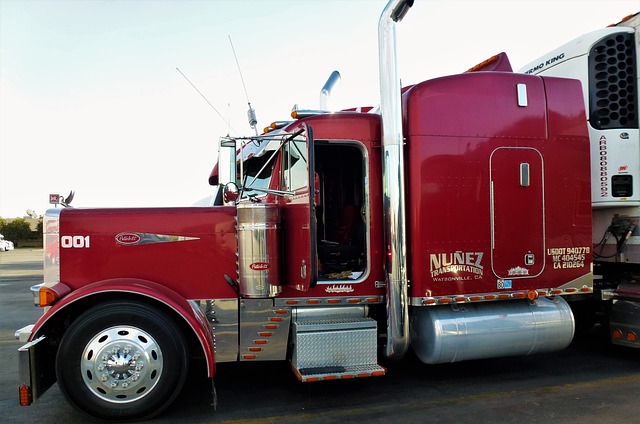Looking to register your car in California? This comprehensive guide walks you through the entire process, from understanding essential requirements to crucial steps like DMV VIN verification. We’ll detail the necessary documents, vehicle inspection, and title transfer, ensuring a smooth experience. After registration, learn about post-registration tasks such as insurance, tags, and maintenance for your newly-registered California vehicle.
- Understand the Requirements for Car Registration in California
- Gather Necessary Documents for DMV VIN Verification
- Prepare Your Vehicle for Inspection and Title Transfer
- Visit a California DMV Office for Registration and Titles
- Post-Registration Steps: Insurance, Tags, and Maintenance
Understand the Requirements for Car Registration in California

Before registering your car in California, it’s crucial to understand the requirements set by the Department of Motor Vehicles (DMV). One key step is ensuring your vehicle has passed all necessary safety inspections and emissions tests. This includes a DMV vin verification process where they check the Vehicle Identification Number (VIN) for any discrepancies or signs of fraud. A mobile vin verifier can be used for this inspection, making it convenient to complete this requirement.
Additionally, you’ll need to provide proof of insurance, have your car’s title ready, and pay the registration fees. The process typically involves submitting an application form, along with the required documents, at a local DMV office or sometimes through their online services. A vin inspection ensures that all vehicles on California roads meet safety standards, contributing to a smoother and safer driving experience for everyone.
Gather Necessary Documents for DMV VIN Verification

Before heading to the California Department of Motor Vehicles (DMV), ensure you have all the required documents for a seamless dmv vin verification process. This includes the vehicle’s registration certificate, proof of insurance, and the owner’s valid identification document like a driver’s license or state-issued ID card. Additionally, gather any previous title documents if applicable, as well as the Vehicle Identification Number (VIN) from your car.
For a quicker and more convenient mobile vin inspection or mobile vin verification service, some third-party providers offer mobile vin verifier options. These services can save you time by allowing a professional to conduct the dmv vin verification at your location, be it your home or workplace. However, ensure these services are reputable and authorized to prevent any potential issues with official record-keeping.
Prepare Your Vehicle for Inspection and Title Transfer

Before you can register your car in California, you’ll need to ensure your vehicle passes a series of inspections and has all necessary documentation, including a clean title. To start the process, Prepare your vehicle for inspection by ensuring it’s safe to drive and meets basic safety standards. Check for any outstanding repairs, proper functioning of lights, brakes, and other critical components. The California Department of Motor Vehicles (DMV) will perform a VIN verification as part of their inspection process, so having accurate and up-to-date vehicle information readily available is essential.
For convenience, many individuals opt for a mobile VIN inspection or a vin verifier service that can come to them. These services streamline the process by handling the paperwork and ensuring your vehicle’s history is accurately represented, which includes verifying the title transfer and any previous accidents or damage reported on the vehicle. This step significantly reduces potential delays during the registration process at the DMV.
Visit a California DMV Office for Registration and Titles

To register your car in California, one of the essential steps is visiting a local DMV (Department of Motor Vehicles) office for registration and titles. This process ensures that your vehicle complies with state regulations and is safe for road use. When you arrive at the DMV, you’ll need to bring several documents, including proof of ownership, identification, and possibly an insurance card. The staff will guide you through the registration process, which involves filling out necessary forms and providing detailed information about your car, such as its make, model, year, and unique VIN (Vehicle Identification Number).
A crucial part of this process is the dmv vin verification, where your vehicle’s VIN is cross-checked against state records to ensure it matches the information on file. You may also opt for a mobile vin inspection or use a mobile vin verifier to streamline this step. This verification process helps in combating fraud and ensures that only legitimate vehicles are registered, contributing to safer California roads.
Post-Registration Steps: Insurance, Tags, and Maintenance

After successfully registering your vehicle with the California DMV, there are several essential post-registration steps to complete. The first and most crucial is ensuring your car is insured. In California, all vehicles must have valid auto insurance coverage before they can be driven on public roads. You’ll need to purchase a policy that meets the state’s minimum liability requirements and consider additional types of coverage based on your needs.
Additionally, you’ll want to obtain and display current vehicle registration tags and complete regular maintenance checks. Tag renewal is typically required annually, and you must update your license plate if it changes during ownership. Regular maintenance inspections can help identify potential issues early on, ensuring your vehicle remains safe and reliable. Consider utilizing a mobile vin inspection or a vin verifier service for convenient and efficient verification of your car’s history as part of this process.
Registering a car in California involves understanding specific requirements, gathering essential documents for DMV VIN verification, preparing your vehicle for inspection and title transfer, and visiting a local DMV office. Once registered, remember to complete post-registration steps like obtaining insurance, displaying tags, and maintaining your vehicle. Following these straightforward steps ensures a smooth process, keeping you and the road safe.
